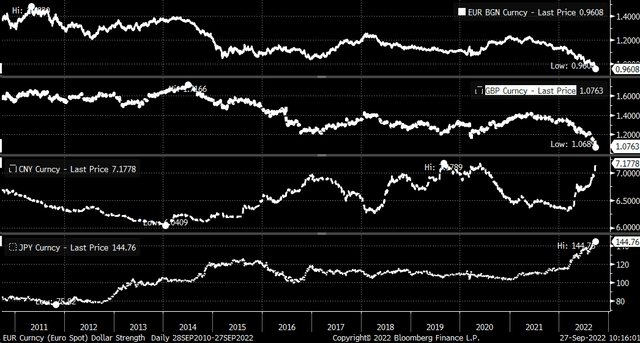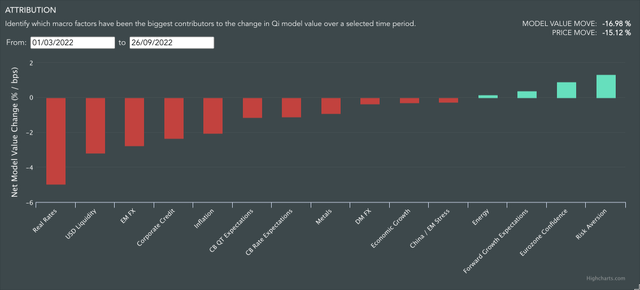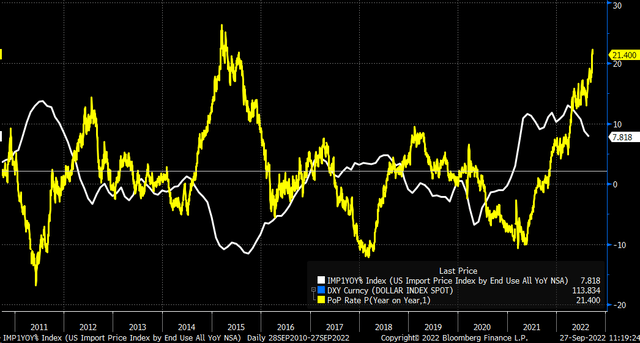
Viorika
The strong US dollar has been a big reason why stocks have suffered in 2022, and that strength isn’t like to abate anytime soon. The dollar has hit multi-decade highs vs. many significant currencies such as the euro, Japanese yen, and British pound. Additionally, it has been trading at its strongest level vs. the Chinese yuan since 2020.
The strong dollar has been a critical part of the Fed’s fight against inflation, as it helps to tighten financial conditions and fights inflation by pushing down the cost of many commodities priced in dollars.
Any weakening of the dollar would ease financial conditions, increase prices, and pressure the Fed to usher in an even more hawkish monetary policy.

Bloomberg
Big Headwind For Stocks
The stronger dollar has also been a significant headwind to the equity market. As noted by Quant Insights, dollar liquidity has been the second most considerable headwind to the S&P 500 since March. Over that time, the only more significant adverse driver on the S&P 500 has been rising real rates.

Quant Insights
Monetary Policy Drives The Dollar Higher
The ascent of the dollar has been due to multiple reasons. The eurozone and the United Kingdom lag behind the Fed in tightening monetary policy, and their economies are racing toward recession. Meanwhile, easing monetary policy in China has led to the dollar’s strength against the yuan. At the same time, the Bank of Japan continues to maintain a negative interest rate policy and yield curve control. These widening differences between Fed monetary policy and the policy of other central banks and economic circumstances drive this dollar strength.
This dollar strength poses a further threat to equity markets in the US should that rise continue as it works to tighten financial conditions further. Additionally, a strong dollar is a significant headwind for earnings and revenue as it makes US exports less competitive abroad, which harms S&P 500 earnings and revenue estimates.
However, the most significant risk is if the dollar should begin to weaken. A dollar that begins to decline would likely work to trigger higher commodity prices, and commodities like oil would start to rise again, which would work to create additional inflationary pressures. Also, import prices would begin to rise again as well. Historically, when the dollar index strengthens, it works to reduce import prices, and when the dollar weakens, import prices tend to rise.

Bloomberg
Dollar Strength Likely To Continue
So while a weakening dollar could be seen as positive initially by the equity market, longer term, it’s likely to work against the Fed’s ambitions of lower inflation, causing the need for more monetary policy tightening.
Additionally, a weaker dollar would help to ease financial conditions overall, which also would be favorable to stock in the short term. But again, the Fed desires to see financial conditions tighten, so the chance of the Fed allowing the financial conditions to ease too much would likely result in tighter monetary policy.
Essentially it implies that until inflation has clearly shown signs of subsiding, the dollar will likely remain very strong.


Be the first to comment